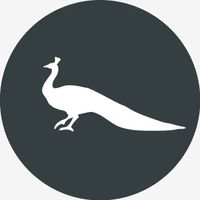My Favourite Painting: Michael Sandle
Sculptor and draughtsman Michael Sandle chooses a haunting Arctic image by Caspar David Friedrich.


Michael Sandle on his choice, The Sea of Ice (aka The Polar Sea and The Wreck of Hope) by Caspar David Friedrich
‘As I’ve been a visual artist all of my life, it’s been difficult to decide from all of the paintings floating in my mind which is my favourite, but this one kept jumping out from all of the others.
‘It’s an immensely powerful image, with a similar dynamic to Tatlin’s equally unforgettable Tower, and also has a lot in common with Totes Meer by another favourite artist of mine, Paul Nash.
‘As I’m a dyed-in-the-wool pessimist, the additional title sometimes used for this stunning work — Die gescheiterte Hoffnung, or The Wreck of Hope — also greatly appeals to me .’
Michael Sandle is a sculptor and draughtsman best known for A 20th Century Memorial (Tate), although he is proudest of his architectural Siege Bell Memorial in Valletta Harbour, Malta.
John McEwen on The Sea of Ice and Caspar Friedrich
In Friedrich’s time, much discussion still concerned Romantic concepts of the Sublime, the Picturesque and the beautiful. Joshua Reynolds wrote: ‘The sublime in painting, as in poetry, so overpowers and takes possession of the whole mind that no room is left for attention to minute criticism.’
The sculptor David d’Angers, who met Friedrich, thought ‘he discovered the tragedy of landscape’. In Penguin’s Dictionary of Art and Artists, Friedrich is ‘the most purely romantic of German landscape painters’. The Sublime demands awe and no work of his is more awesome than this masterpiece of Nature’s might.
It was preceded by a painting, commissioned by a Dresden collector, of an ice-bound shipwreck, which served a monstrous and sublime counterpart to a landscape painting by another German artist of all that was pleasant and harmoniously beau-tiful in southern climes.
Captain (later Sir) William Parry’s first heroic voyage to find the fabled North-West Passage linking the Atlantic with the Pacific resulted in his ships, HMS Hecla and HMS Griper, being ice-locked for 10 months in 1819. Friedrich may have been inspired by this epic tale, but he also made studies of ice floes on the river Elbe, near Dresden.
The image anticipates Frank Hurley’s famous photographs of Shackleton’s doomed Endurance by a century. Its power lends itself to any interpretation. If, for us, the ice is lockdown, who or what is the ship — our health, our liberty, the economy, humankind?
Certainly, the awesome message has never been more apt, but it is for the viewer to decide why. Friedrich wrote: ‘A painting must stand as a painting made by human hand; not seek to disguise itself as Nature.’
Exquisite houses, the beauty of Nature, and how to get the most from your life, straight to your inbox.
Country Life is unlike any other magazine: the only glossy weekly on the newsstand and the only magazine that has been guest-edited by His Majesty The King not once, but twice. It is a celebration of modern rural life and all its diverse joys and pleasures — that was first published in Queen Victoria's Diamond Jubilee year. Our eclectic mixture of witty and informative content — from the most up-to-date property news and commentary and a coveted glimpse inside some of the UK's best houses and gardens, to gardening, the arts and interior design, written by experts in their field — still cannot be found in print or online, anywhere else.
